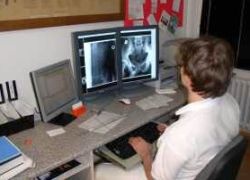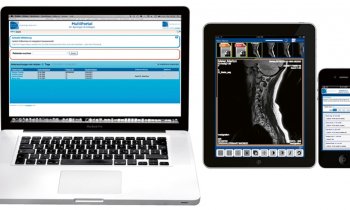IT planning and implementation
By Ing. Petr Vyskocil, the hospital's IT manager, and Dr Dagmar Zezulová, head of the radiology department
The 300-bed Svitavy County hospital was completely restructured in 2003-2004. The catchment area represents around 60,000 citizens.

Transportation to the hospital is not always easy, so satellite hospitals in nearby towns were extensively used for standard RTG examinations. Thus the Svitavy hospital management decided to gradually employ a new technique of radiology data-sharing between these facilities. At the end of 2005 the first step towards full digitisation began. Indirect digitisation of skiagraphy, skiascopy and ultrasound departments was launched with the digital archive. Investment was c. CZK 8.5 million, which bought two CR systems (Kodak Orex scanners plus terminals and scanning cassettes), connection of all modalities with DICOM outputs into the PACS system, digital archive MARIE PACS (manufactured by OR CZ, s.r.o.) with 2.4 TB capacity with back-up feature and 24/7 international supervision, three diagnostic terminals with 3 - displays BARCO monitor system special viewing software, and other network switches and accessory parts.
The next step is to connect both C-arms with DICOM output situated in operating and endoscopy theatres, videogastroscopy and videocolonoscopy, etc. Thus, the patient database will contain complete imaging documentation, from screening to final diagnosis. Digitised data are immediately available to all participating physicians via a secured network connection, and CDs with viewing software are supplied for patients or their own physicians. For other departments, or hospitals in the region, the system allows data viewing via secured internet connection, or transmission by e-mail in encrypted format.
The hospital aims to set up a digital system to enable sharing of all data in the database gained from radiology examinations. After that, all previous data for an individual patient will be accessible in one file for an attending physician to review and assess the dynamics of the illness. The system is also extremely beneficial - the link between departments and/or hospitals enables a double-review of findings, to minimise diagnostic errors.
The next purchase will be multidetection CT - not so necessary, but wanted, is double-photon densitometry in osteology diagnostics.
Inevitably these medical devices mean an overall reconstruction of the premises where the RDG department is based. So far, the initial stages needed an additional investment of CZK 3.2 million.
This revision brings changes to the current examinations schedule and physician/patient communication, all minimising time for examinations and diagnostic processes. The management strongly believes that, stepwise, patients will soon add to this new initiative, and effectively integrate potential examinations needed into their daily programme.
Details: www.mou.cz
01.05.2006










